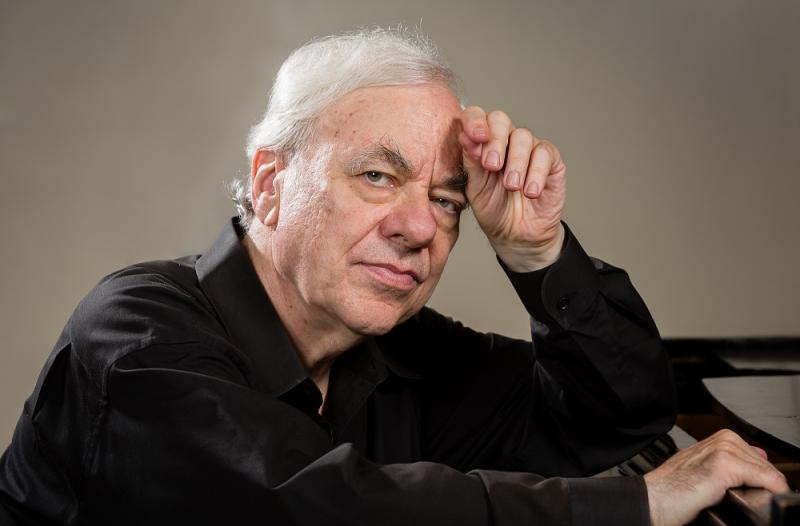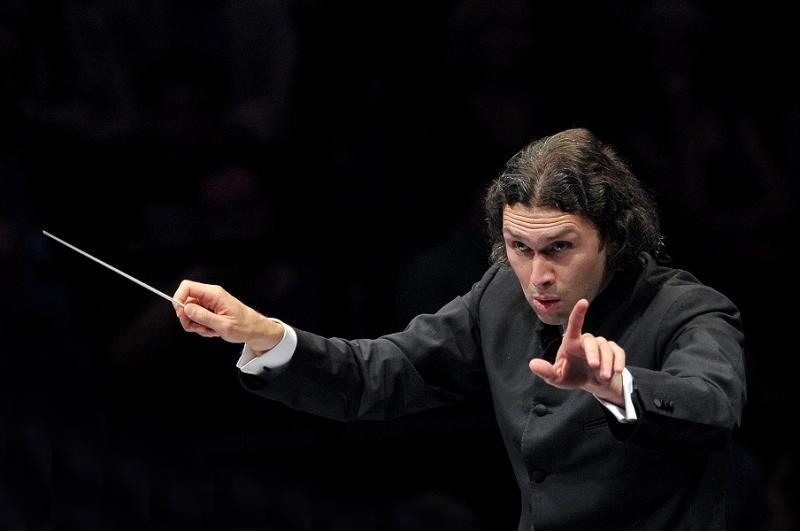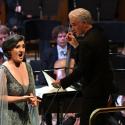Richard Goode is one of the world’s great pianists, but you wouldn’t guess it from his humble and unpretentious stage manner. He wears thick glasses and squints into the music, and when he plays he sings along under his breath. When he is not playing, he often turns and gestures vaguely at the orchestra, not so much aping the conductor as moving with the flow of the music. He clearly lives every note, and everything he does is to the service of the score.
Not virtuoso showmanship, then, and little bravado, though his playing is always lucid and engaging. That’s an ideal combination for Mozart’s 20th Piano Concerto, one of the composer’s most inward-looking and contemplative large-scale works. Goode’s (pictured below by Steve Riskind) performance focussed on melody: all the runs and decoration – perfectly executed of course – were secondary, and dashed off without incident or drama. And Goode’s approach throughout was always collaborative, listening carefully to the orchestra and sensitively engaging with their carefully shaped phrases. The slow movement opens with an unaccompanied piano solo, a moment of tender beauty under Goode’s hands, but the effect was only completed by the entry of the orchestra, giving welcome context to his delicate melodic line.
Vladimir Jurowski has been traversing the Bruckner symphony cycle over the several seasons, and here reached the halfway mark with the Fifth. His approach throughout has focussed on precision and detail, and this performance was no exception. Ten years at the helm of the London Philharmonic have led to a relationship so close that every miniscule movement he makes at the podium can yield a subtle change in balance or tone. That responsiveness is ideal for his approach, employing the cleanly delineated orchestral colours to sculpt the music, with careful attention paid to each phrase and chord.
Jurowski has found his own solutions to the score’s many structural issues, and these often involve setting tempos to anticipate the problems ahead. For example, the Ländler near the start of the Scherzo was taken at a very steady pace, and remained frustratingly slow until a sudden accelerando into the first climax – a typically abrupt change of mood. The second movement, by contrast, opened at a brisk and unyielding pace. The elegant oboe solo from Ian Hardwick prevented it from sounding clinical, but here the intent seemed to be to allow the movement to gradually relax into the broader textures later on. The climax of the Adagio more than vindicated Jurowski’s approach, with the cascading waves of string counterpoint performed with spectacular clarity, beautifully balanced against the muscular, and no less precise, brass chords.
Detailed and dynamic works in most of the music, but there were several occasions where a more relaxed and expansive sound would have been welcome. Several of the climaxes in the first movement sounded rushed, and even in the quieter music the woodwind phrasing sounded clipped under Jurowski’s overly detailed direction. It was hard to escape that feeling in the finale too. Jurowski skilfully navigated the competing tempo demands here, the quotes from the earlier movements all linking back well, but the great chorale from the brass was short-breathed and initially underwhelming. It turned out that Jurowski was holding back his forces, and the final minutes were truly spectacular.
It is hard to place Jurowski in any established tradition of Bruckner interpretation. He is as brisk and nimble as many of the younger generation but, unlike most of them, is able to highlight and integrate every crucial detail. Add to that spectacular performances from each section of the orchestra – precise ensemble from the huge string section, characterful woodwind solos, weight and substance from the brass – and the result is a performance of conviction, power, and compelling insight from start to end.
- This performance was recorded for BBC Radio 3 for broadcast on Monday 2 October, then available on BBC iPlayer
- Read more classical music reviews on theartsdesk















Add comment